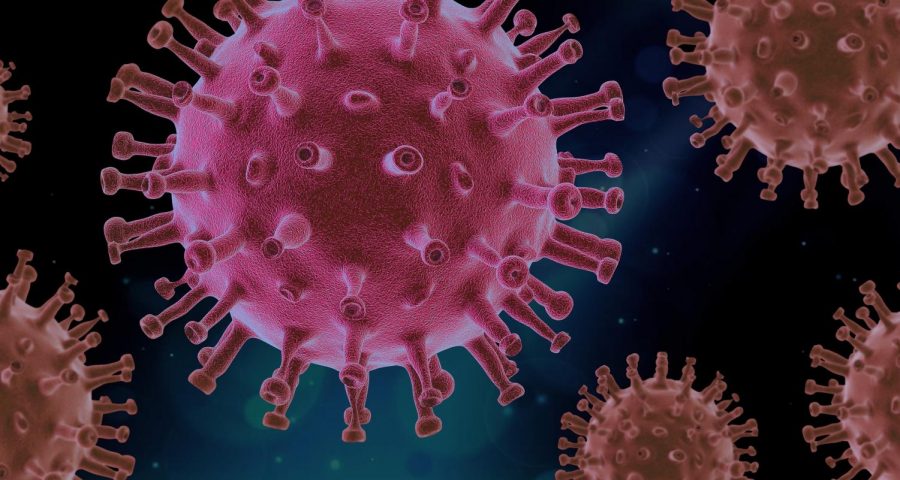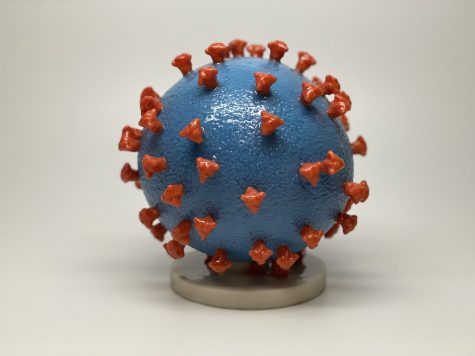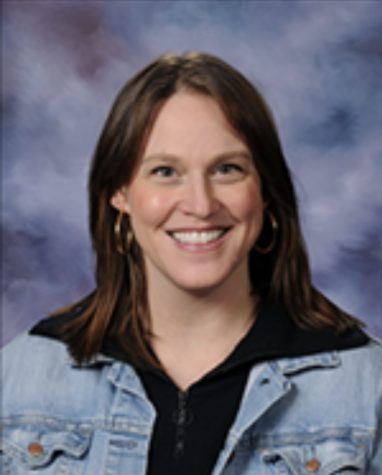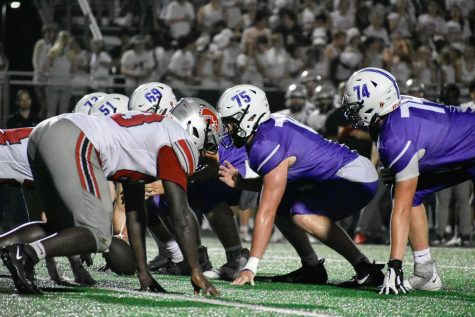The Fourth Trimester of School in a Pandemic
Students and educators left Iowa City Community School District buildings in the third trimester of the 2019-2020 school year due to the Coronavirus pandemic. Now, ICCSD is continuing to navigate schooling in the fourth trimester of the pandemic.
The Covid-19 virus has had a tremendous impact on the world, but has especially affected schools.
On March 13, 2020, all students in the Iowa City Community School District left for spring break, expecting to return to school on March 23. Little did they know, the next time they’d return to ICCSD’s buildings would be September 28.
From the third trimester of the 2019-2020 school year to the third trimester of this academic year, students and staff have experienced five different models of learning. This has required constant adaptation for everyone in ICCSD over the past 12 months.
Brady Shutt, Social Studies teacher and President of the Teachers’ Union, explained how the first abrupt transition during the spring of last year occurred.
“When we left for spring break on Friday, March 13, 2020, the Iowa boy’s State basketball tournament was still happening, and there was no clear indication that we would not be returning to our school buildings for onsite learning for the rest of the school year. As school closures, and extensions of those closures, were announced under the emergency powers granted to Governor Reynolds by the Iowa legislature, our district followed the rules and guidance from the Department of Education closely and carefully,” said Shutt.
Starting on March 15, 2020, with governor Kim Reynolds’ recommendation of a 4 week school closure, ICCSD made decisions based on government guidance.
The first 4 weeks of lost learning time were excused by the Iowa legislature. However, as time continued beyond the original closures, all districts were required to formulate a plan that was to be approved by the state.
“We operated using a remote learning model that featured both synchronous and asynchronous opportunities for students. Student participation for grades K-8 was optional whereas grades 9-12 offered optional opportunities as well as an opportunity for students to earn a letter grade for satisfying the requirements established by their classroom teachers. Senior high students who chose not to seek a letter grade by completing the weekly requirements established by their teachers were given a Pass,” said Shutt.
Students’ standing in their courses largely influenced their decisions to take a ‘Pass’ or earn a letter grade. Students who were focused on maintaining their GPAs or improving them, often sought out earning a letter grade for their benefit. Other students who prioritized getting through the chaos of the pandemic and online learning, opted for a ‘Pass’ instead.
“As educators, we were constantly changing our approach as we learned more from the state, learned more about the COVID virus, and connected with our students in what turned out to be a completely online experience,” said Shutt.
Teachers and students alike had to learn how to adapt to the ever-changing circumstances of online learning to ensure state requirements were being met, while also keeping their own mental-emotional health in check. Melissa Nies, social studies teacher, said that this time was not easy in any way.
“There have been many hard days and moments for students. These have been the hardest for me as well,” said Nies.
Iowa schools were eventually closed for the entirety of the year, and the same model developed in April continued through the end of May.
In July, the ICCSD announced that they would begin the school year in a 100% online model. Interim superintendent Matt Degner said in a Gazette article that the plan for this model was more strategic than in the “emergency meeting” style online learning that occurred during the spring of 2020.
Teachers and administrators worked together to develop this online model over the summer in order to give students the best education possible from their computers.
“Many schools purchased pre-made, asynchronous curriculums (like Edgenuity). We knew we could do better than that, and knew from our surveys of families that there was a lot of interest in an online option, so educators and staff across the district collaborated and worked all summer to put together the Iowa City Online Learning Program,” said Shutt.
Reynolds then announced that schools would be required to offer some kind of in-person learning option for students to start the school year, interrupting the plan of ICCSD. In response, Iowa City schools pushed back their start date from August 24, 2020 to September 8 in hopes to gain an exemption from the governor’s office, which was eventually granted.
At this time, students could choose between two models: the online model and the hybrid model. Regardless of the model chosen, all students and staff started the year online.
The new academic year required new standards compared to the way the previous trimester unfolded. Due dates and late policies were a large topic of conversation and at Liberty each department decided on their standards.
Peggy Dolson, english teacher, said that there was high consideration of outside circumstances when formulating guidelines.
“The English Department [has been] very lenient with due dates, while still trying to hold students accountable for learning the priority standards. Revision has always been a part of writing, so that isn’t really a change, and I really don’t think many English teachers are test heavy. But if teachers do give quizzes, there are options to retake or show you know the information another way,” said Dolson.
Despite changes in expectation, being online to start the year was not favorable for many students, including Trista Spies, junior.
“I couldn’t find the motivation to do school work all the time,” said Spies.
On September 28, 2020, students enrolled in the hybrid model came back into the classroom for the first time since March.
Quinn Cleary, freshman, was among the students that returned to school in September. Online school was challenging for him, but hybrid was a good change.
“Two days a week, three days a week is just like perfect for school, in my opinion,” said Cleary.
Bringing students back into schools caused some stress about health and safety, but ICCSD worked diligently to protect staff and students.
“The Iowa City Schools have very strong, science-driven mitigation strategies designed to protect the health and safety of students and staff (and our community) to the best degree possible. Our administrative teams, teacher’s union, and school board have worked closely with our local health officials to develop protocols and procedures that will work best in our schools… We also have an amazing and strong partnership with the Johnson County Board of Public Health, as well as our outstanding medical providers like the University of Iowa Hospitals and Clinics and Mercy,” said Shutt.
In November, less than a month after hybrid began, ICCSD was granted two online waivers from the governor’s office.
Until mid-December, students were online, and Mae Massey, sophomore, said this model of school was her least favorite overall.
“I just couldn’t interact with my teachers as much as I wanted to,” said Massey.
After winter break, students once again returned to school in the hybrid model.
The hybrid model affected all students differently.
“I do feel there has been less learning for some students; some students have used the pandemic as an excuse or they fell into poor habits during the A/B hybrid schedule. But other students have taken initiative and are learning even more because they are exploring topics during their free time or they are eager for more rigorous materials,” said Dolson.
Another big change presented itself on January 29, 2021. Reynolds signed a bill mandating Iowa school districts to offer 100% on-site learning. The bill was put into effect on February 15, 2021.
Spies and Cleary both said the transition from hybrid to full time was the hardest transition for them throughout the pandemic.
“Five days a week, at the beginning, was really overwhelming. It was like ‘Wow, I can’t believe we used to do this all the time’,” said Cleary.
For Massey, coming back to full time school was the first time she set foot in Liberty since March 2020.
“I was online all year and then just switched to full time, so I never did the hybrid [model]. That was probably the hardest transition,” said Massey.
Though students and staff in the district were uneasy about this transition, Dolson said it has proven to be the best for students.
“I could feel the change right away. There is more life in the hallways, and students are beginning to engage in learning activities again,” said Dolson.
Now, students and staff are in their fourth trimester of school in the pandemic. Case numbers are continuing to go down and vaccination numbers are beginning to go up. ICCSD continues to navigate the pandemic, and recently announced that they will provide an online program for anyone in the state of Iowa to support the needs of all types of students.
With only 9 weeks of school remaining for ICCSD students, the rigor is picking up, and school is continuing back to normal.
“I think teachers and students in AP courses might feel pressure this trimester, but they always feel pressure this time of the year…This trimester should serve to get students back ‘in the groove’ of school,” said Dolson.
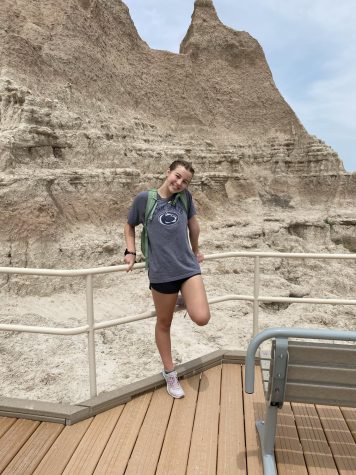
Amelia Cleary, junior, is a first year staff member. Outside of school, Amelia spends most of her time dancing at Nolte Academy. She also enjoys hiking,...



